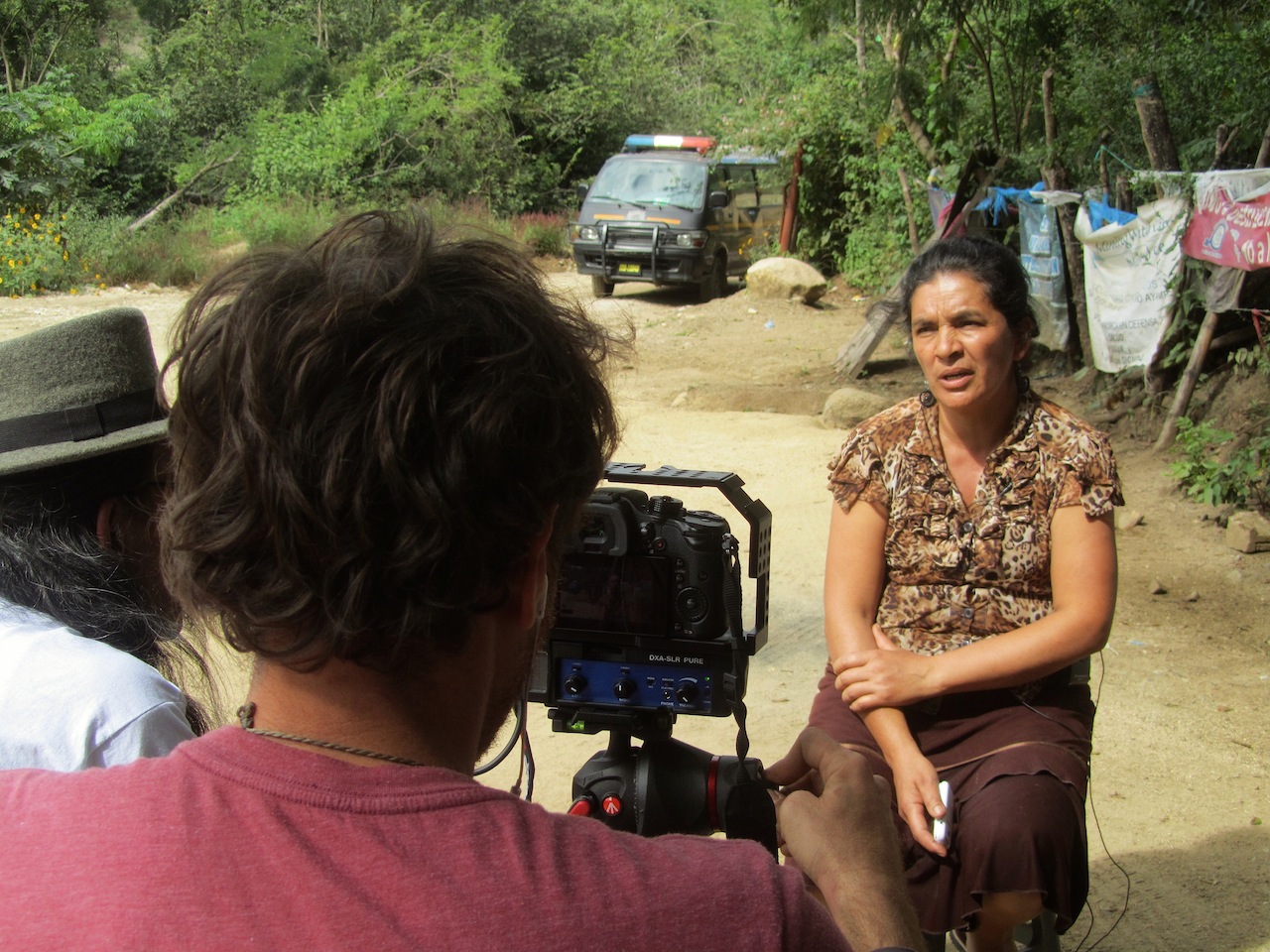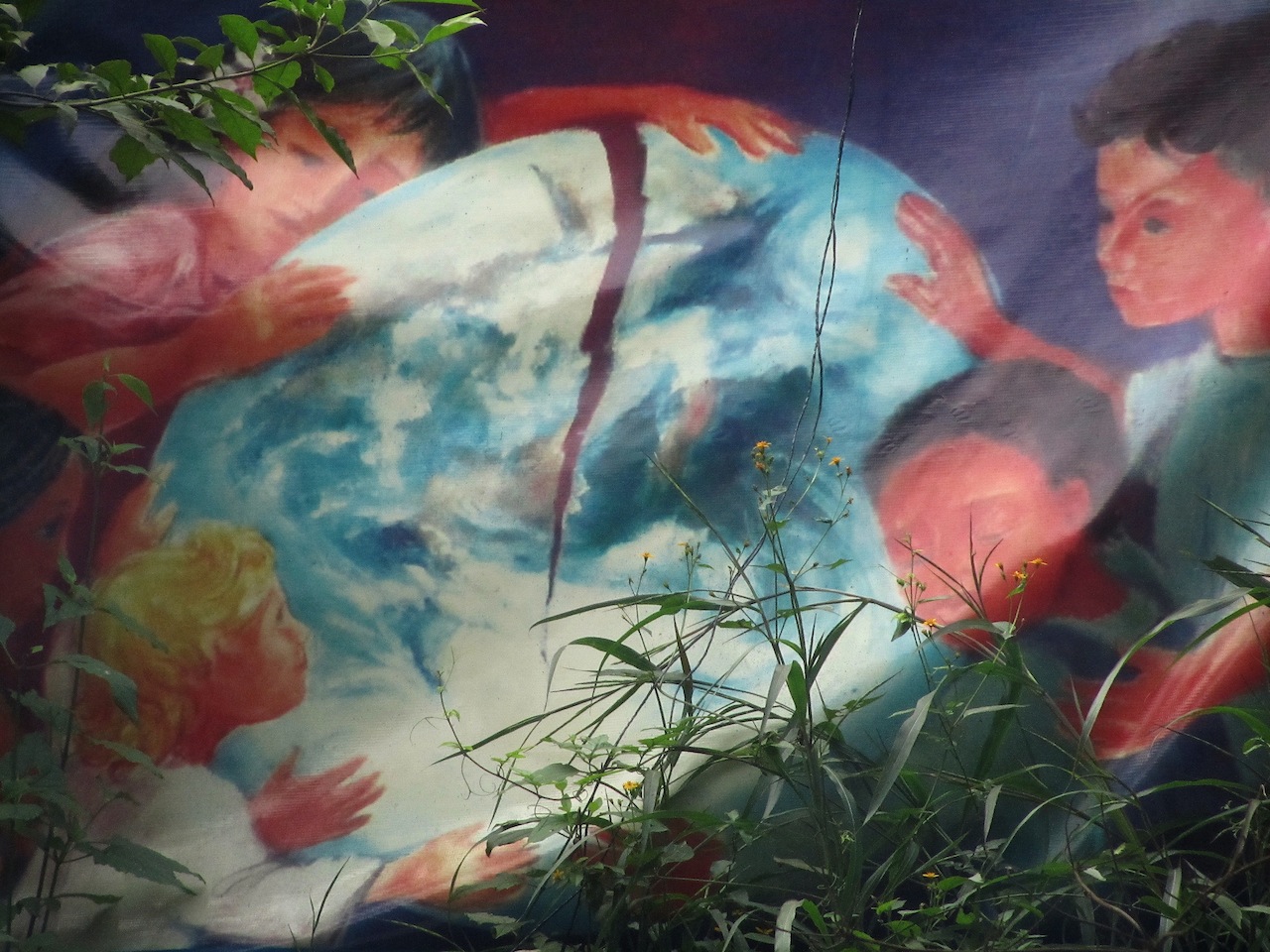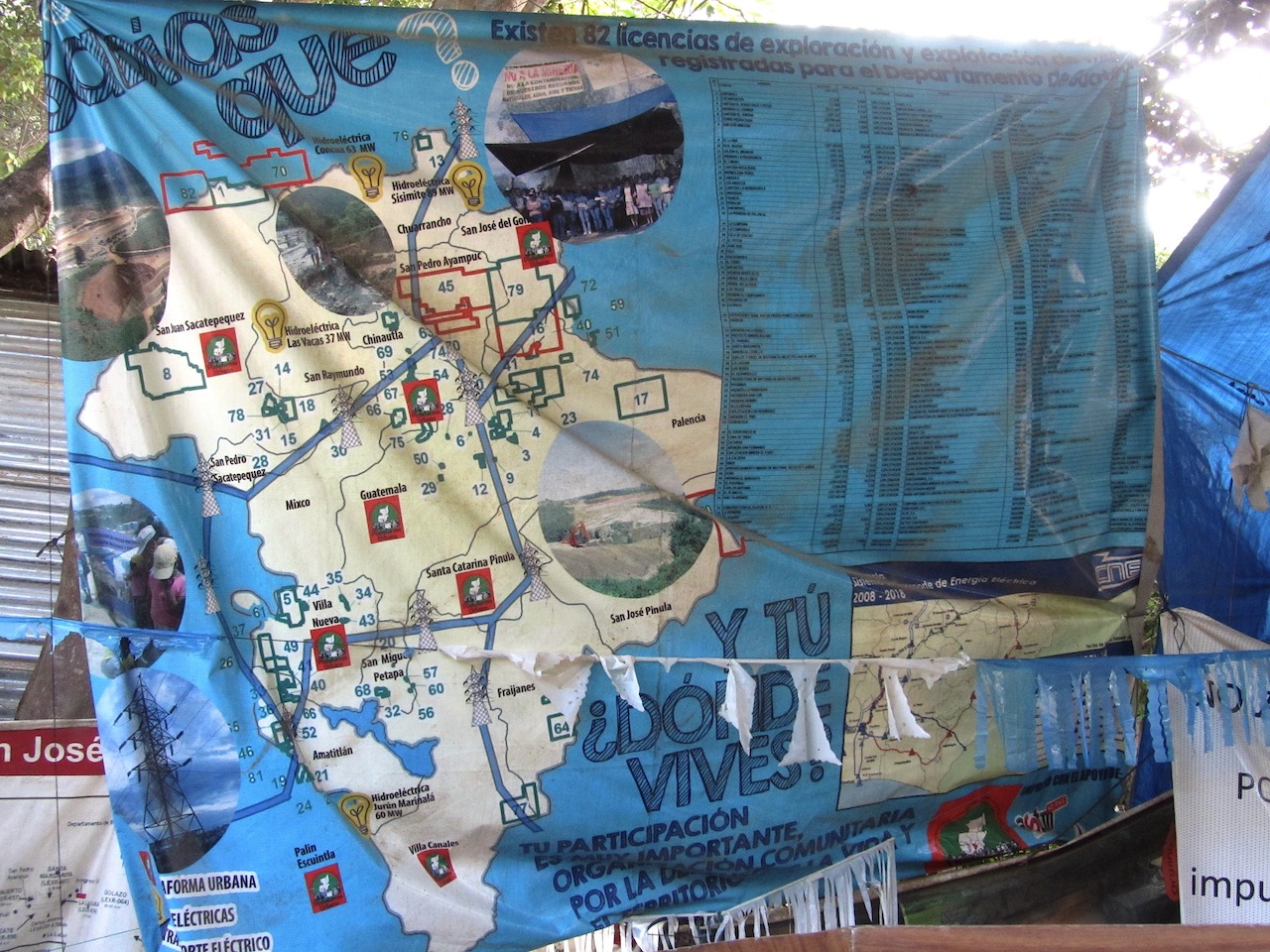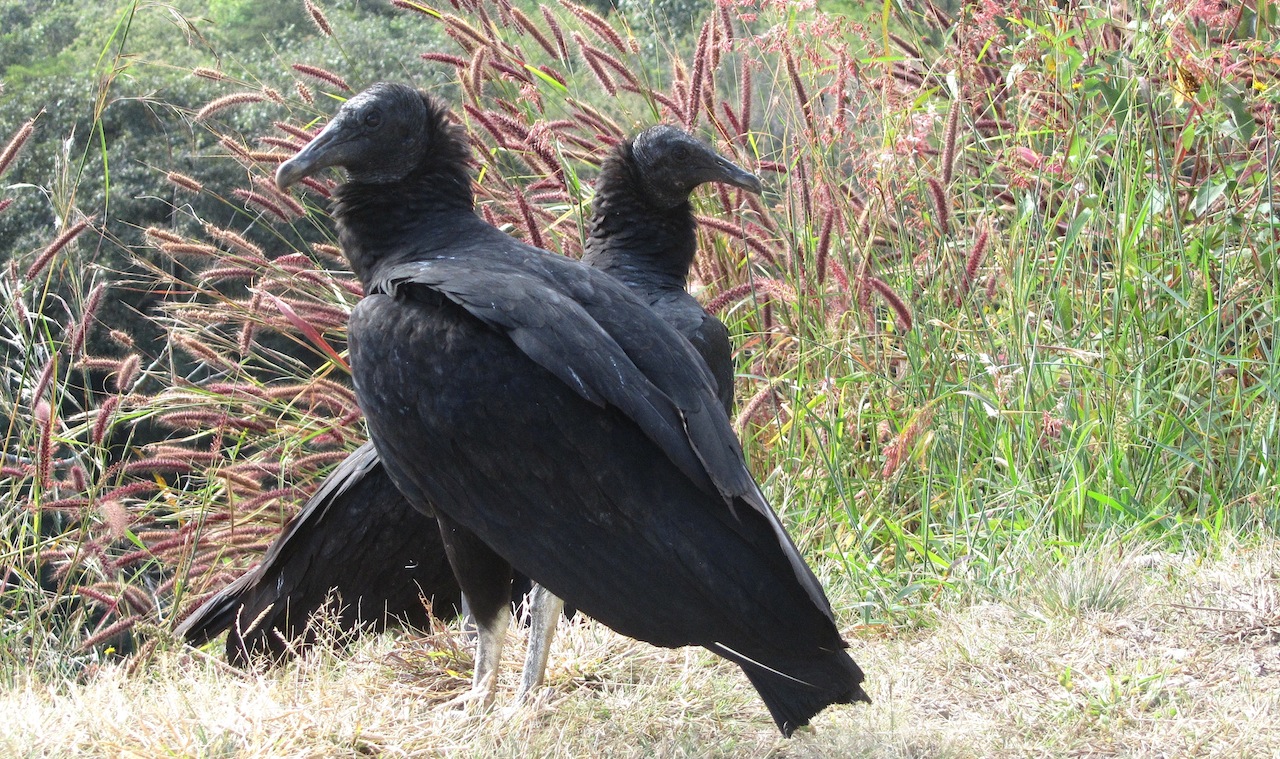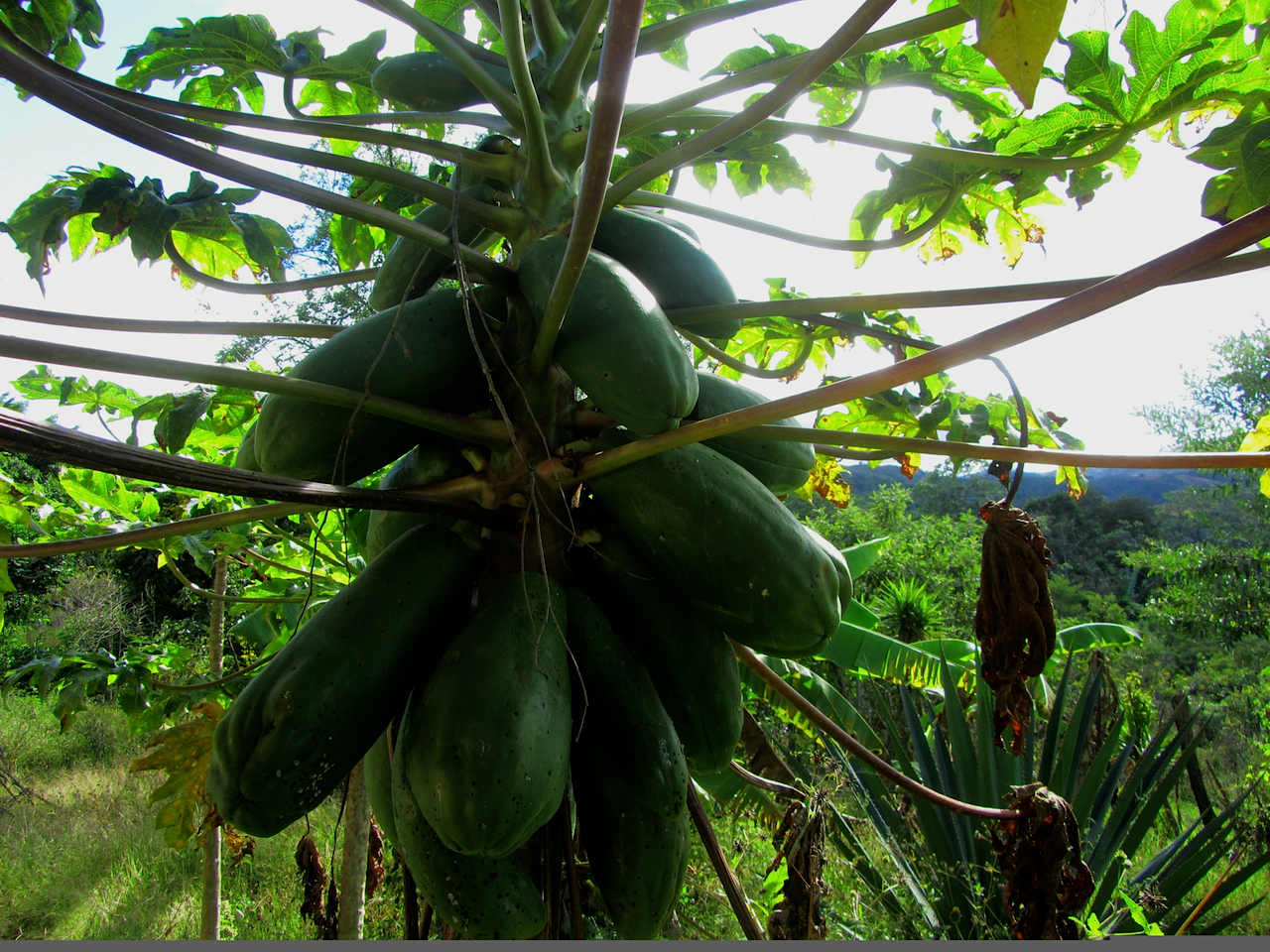T.A.S. Special Edition
Fighting For Life: Guatemalan Women Stand Up to Gold Mining
Many of Life’s stories seem to find ways of repeating themselves through different people, in different lands, and at different times. This is a personal story emerging from a rural Guatemalan community that we visited in San Pedro Ayampuc – about half-hours drive from Guatemala City. The community, now known as, “La Puya,” has been courageously engaged within the ongoing battle between Life-promoting forces and their tireless opposition for the last five years – with their opposing force being the presence of ‘Kappes Cassiday and Associates’ (KCA), a United States gold mining company, and their Guatemalan subsidiary, ‘Exploraciones Mineras de Guatemala’ (EXMINGUA). The story enlivens the all-too common struggle of indigenous and low-income peoples against large-scale destruction by extraction companies – often from foreign lands; and clearly demonstrates the necessity of patience, perseverance, and social organization when engaged in such great endeavors. The characters within the story embody the will of the human spirit to reject injustice despite odds or risks that the opposition may bring. A will that grows stronger when an individual is aware of the true value of who/what is at risk. Finally, the story demonstrates how unexpected blessings in Life often awaken triumphantly from pain.
Traveling amongst Guatemala, soaking in the beauty of the land, its Water bodies, the rich Mayan culture, exquisite tapestries and arts, and the region’s various delicious foods, our regard for the country grew quickly. The amount of passion, love, hard work, and appreciation shown by Guatemalans was a nourishing inspiration to remember how Life is designed to express itself. We found it distressing to imagine the difficulties the resistance community we were heading to were facing. How all the richness that comes from being connected to one’s culture and Native land was at risk from being lost to personal short-term profits and global epidemics of consumerism. How the rights of the People, the Water, and the Environment were being undermined through concessions given by corrupted government officials. The story was all too familiar to the story of North America’s Appalachian Mountains being destroyed by coal mining and hydraulic fracturing, and the story of the Black Hills contamination by gold and uranium mining. As we climbed over the final hill on our short journey to La Puya, we were met on the other side by a line of armed Guatemalan police trucks, and immediately got a sense of the reality that manifests from insatiable materialistic hunger.
Responding to any potential physical hunger we might’ve arrived with, the women of La Puya greeted us with freshly hand-patted tortillas, beans, and rice from their community kitchen. As we ate, we noticed that the construction of their resistance tents and structures was of reclaimed wood, canvases from old billboards, and numerous informational signs and maps. One of the area’s largest signs was stretched over the road and read, “Transnational Companies Get Out Of Our Territory! This Land Is Not For Sale! We Fight And Defend It!” Following breakfast one of the women clearly expressed her feelings on the issue, stating, “We are a part of the land and do not want the children or the Earth to be sick.” As we journeyed up the road to get a closer look at the mining operation, a few La Puya residents began to share more of their story with us. They began with how the resistance got their name, and why they’ve chosen to remain peaceful in their endeavor.
In Spanish, “La Puya” stands for a pointed object. This refers to both a cattle prod used to drive large beings out of the way – with KCA and EXMINGUA acting as the large beings to be removed; as well as to the thorns found within the area’s plant community, and the uncomfortable nature of them when they get under the skin – just as the La Puya resistance, representing the 14,000 residents living near the mining region, intend to irritate the Transnational company. After learning about other resistances in the area, the La Puya resistance understood that their resistance must be nonviolent in order to prevent anyone in their community from being killed – as any violence perpetrated could become cause for the ,military to be deployed through a state of emergency decision. The community also expressed awareness that peace can never, and will never, be achieved through violence. One of the women featured in our video, Miriam Pixtún Monroy, explained to us, “we are not willing to sacrifice lives so that the lives of others can go ahead of them. We say that the resistance is peaceful because we think that Lives are priceless – not just ours – the ones that are here – but all those lives that can’t protect themselves; like the animals and the plants. They’re also living beings that are not able to protect themselves.”
Though La Puya has chosen peace, the government and the mining company have not. In attempts to move the resistance from the mine’s entrance road, hundreds of local police and mine workers aggressively entered the area in November and December of 2012 – harassing and threatening the people, and tearing down their community kitchen and signs. The resistance held their ground – literally by laying in the road praying – and for nearly two years prevented any further progress at the mine. Then, in May 2014, the government sent nearly 1,000 state police to forcefully move them aside through the massive use of tear-gas, rubber bullets, stones, and logs. As the police cleared the path, aiming their weapons at the protestors’ bodies, the mining company followed close behind to ensure entry of their large vehicles and equipment. Twenty people were badly injured and seven required hospitalization. The second women featured in our video, Felisa Muralles (“Doña Licha,”) after being hit twice in both her chest and stomach, had her clothes ignite and cause severe burns across her body. She told us that, “God will punish them for what they are doing to us. We are defending Life and Nature and this is how they pay us back.”
Doña Licha’s story parallels another leader’s story at La Puya, Yolanda Oqueli, who remains with a bullet near her spine after being shot at from masked motorcyclists following a protest in June 2012. Shortly after the incident, Radius Gold, the company originally invested in the mine, sold its shares to KSA and EXMINGUA. Miriam Pixtún Monroy too had endured violence during the community’s struggle. She comes from a town organized in many mining, hydroelectric, and monoculture resistance activities – whose main street was fired upon in September of 2014 by unknown forces. The Guatemalan Human Rights Commission documented that people were hunted down, eleven people were killed and 15 more were injured – including women and children. Yet it is four peaceful La Puya community leaders who now have five-year jail sentences (NPR news, Milwaukee WI). Miriam discusses within an NPR report that although they could die while confronting the police, that they will also die if the mine continues operation – albeit more slowly – and that if they continue their efforts it is possible that the mine might leave. Miriam then explains how important it is for people to lose their fear in order to achieve their right to a dignified Life.
This is important advice to the numerous families that have organized into six groups, and who for the last five years, have been alternating 24-hour shifts at the mining entrance – whose children fear that their parents might some day not return. As you may have noticed through the assaults taken place upon these women, women have been at the frontline of the La Puya resistance with their strict convictions of being respectful to our Mother Earth and all of her children. They are also aware that they will be the ones most immediately affected if mining operations continue and local Water supplies are contaminated and/or exhausted. The effects would be seen not just in the long-run, with health and sustainability issues arising from contamination and scarcity, but from the short-term effects of not having Water for cleaning and kitchen duties. As the women have continuously demonstrated their courage while facing-off the police and keeping the community united, the social situation at La Puya has changed. Whereas before many of the women felt that there was a great deal of machismo within the community, they state that the positions have changed and that the men now fully listen to and respect the woman. To me, this is living testimony to having faith that there is always something unexpectedly good that arrives through suffering.
Another positive outcome has been increased global awareness of the harmful effects of mining on ecological communities and their people. Miriam and many others like her are now traveling outside their lands to speak with people experiencing similar conflicts. This connective work is encouraging and empowering the world-wide family fighting for Life. The work is of utmost importance as the larger gold, silver, and metal deposits of the world are shrinking with the exponentially increasing global population and price of gold. The demand for gold is also surging for electronics, smartphones, televisions, and laptops that use the metal to conduct electricity without tarnishing. To accommodate, companies are digging deeper and deeper and in more and more remote locations in order to achieve their goals. The dwindling supply means that increasingly less gold and other metals are being recovered, while increasingly more waste is being created.
This represents a significant problem as mine waste typically contains nearly three dozen chemicals – including arsenic, lead, mercury, and cyanide. These chemicals work their way up the food chain and significantly impact health at all levels. The problem intensifies with the incomprehensible amount of Water used in the mining process, with estimates ranging from hundreds-to-thousands of liters per minute, depending on the mine’s size and type. La Puya is located in one of Guatemala’s driest locations and has already seen a dangerous rise in the arsenic levels in their Water. This situation becomes more worrisome considering KCA’s Environmental Impact Assessment (EIA), that to the eyes of internationally recognized hydrogeologist Robert Moran, was one of the worst mining reports that he’s reviewed in 42 years of work. There were faults in over fifty percent of the assessment’s environmental requirements. This faulty EIA combined the Tranational’s failure to abide by a Guatemalan law requiring consent from residents prior to mine development, was enough to help the La Puya resistance win a Supreme Court battle in April of 2016. The relief was short lived, however, as the resulting Supreme Court Order that demands a complete halt to the mining operation has been entirely ignored and the mine continues operation to this day. The surrounding area remains “protected” by local police whose income is ironically paid for by the taxes from the families of the persistent La Puya resistance.
“The Earth is the one that is going to give us Life, so we have to protect her as we protect our own Mother. Take care of the Water – do not contaminate her. Do not contaminate the Earth. Without her, we’re nothing. So we have to defend her.” – Miriam Pixtún Monroy
While visiting La Puya we were welcomed to a traditional Mayan ceremony amongst the land with Miriam, Doña Licha, and their community. One man’s prayers really touched the heart of the situation. With incredible passion and hope, he prayed for people all around the world to be happy; and to understand that to be happy, they do not need to consume. That what we consume with intentions of receiving greater happiness, will inevitably consume us and the Earth. He eloquently discussed how the value of a person is always found within, and never about what they have physically collected. That the materialistic person who hoards with their pockets overflowing, will always desperately grasp for more as they’ve become sick with the insatiable hunger of consumerism. He remarked with great certainty and Love that here on Earth, there is no race, but the Human Race, and no species, but our Earthling Species. That Water connects us all to Life and makes us all equally important. He finished by urging Creator to help the Earth’s children turn away from hyperconsumerism and to know the value and strength of who and what they are.
As more of Earth’s children awaken to realize their strength and the value of all forms of Life, the restorative forces of gratitude and respect can heal our small home. As a whole we can once again know the difference between want and need, and have the will to enliven this knowledge in our daily lives. As a whole we will stand up, seeing Water as Gold, and be willing to put our own lives on the line to protect the lives of all Earthlings and their next seven generations to come. With her concise and moving words, we leave you with an invitation from Miriam Pixtún Monroy:
“The message is to invite you to fight for Life. That we have the right to live a Life with dignity, quality, and plentitude. That this will only be accomplished if each one of us are responsible for our lives, and the lives of others… It doesn’t matter how developed humanity can be, or how technologically advanced they are. Until this moment nobody can lie that there is no technology or economic model that has accomplished finding another way to have Life if it is not through Nature – so therefore we depend highly on Nature, and each and every one of us have the obligation to protect Nature. Because if we protect Nature, we protect ourselves. It doesn’t matter what culture, what religion, what belief. Here the invitation is for the battle of the survival of Life with dignity and with plentitude.”
If you would like to help the Tomorrow’s Ancestors Speak team keep bringing you stories like this, visit http://www.tomorrowsancestorsspeak.org/donate-now/
If you would like to contribute towards La Puya’s cause, please visit the Guatemalan Human Rights Commission at http://www.ghrc-usa.org/






